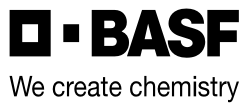Veltyma
Group 3 and 11
For disease protection that’s broader, stronger and longer, Veltyma® is the optimal fungicide to control foliar diseases in a wide range of crops including corn, potatoes, soybeans and wheat.
- Fast acting control with multiple modes of effective action
- Extended residual activity and superior performance provided by the unique binding activity of Revysol®
- Proven Plant Health Benefits1 for increased growth efficiency, better management of minor stress and greater yield potential2
1 Plant Health Benefits refer to products that contain the active ingredient pyraclostrobin.
2 All comparisons are to untreated unless otherwise stated.
Labels & SDS
9 Available
Labels & SDS
Additional Resources
Benefits of Veltyma
- Revysol – the power behind Veltyma – is engineered to provide broader, stronger and longer performance to other demethylan inhibitor (DMI)
- Effective on a wide variety of crops and diseases, including some DMI-resistant disease strains
- Delivers both preventative and post infection activity for long-lasting protection and extended control.
Product Info & Application Guide
Labelled Diseases
| Crop | Diseases controlled |
|---|---|
| Corn |
|
| Potatoes |
|
| Soybeans |
|
| Sugar beets |
|
| Wheat |
|
3 Suppression.
4 Includes control of Group 11 resistant biotypes.
When to Apply
| Crops | Timing5 |
|---|---|
| Corn (field, pop, seed and sweet) | V12 to silk browning |
| Potatoes | 7 to 14 day application interval |
| Soybeans6 | Early flower to mid-pod development (R1 to R3) |
| Sugar beets | 14 day application interval |
| Wheat (all types) | Stem elongation to flag leaf |
5 Do not make more than two sequential applications of Veltyma targeting the same disease before alternating to a labelled fungicide containing a different mode of action.
6 Talk to your grain buyer regarding maximum residue limits for markets around the world before applying to conventional or IP soybeans.
How Much to Apply
One case of Veltyma fungicide will treat 53 to 106 acres (22 to 43 hectares) depending on the rate used.
| Wheat | 152 to 202 ml/ac (375 to 500 ml/ha) |
| Corn, potatoes and soybeans | 202 ml/ac (500 ml/ha) |
| Sugar beets | 202 to 303 ml/ac (500 to 750 ml/ha) |
Mixing Order
- Ensure the spray tank is clean before use. Follow the clean-out recommendations stated on the label of the product that was previously used.
- Fill the spray tank 1/2 full of water and start agitation.
- Add the required amount of Veltyma to the tank.
- Add the required amount of the tank mix partner (if required).
- Continue agitation while filling the remainder of the spray tank.
- After use, clean the spray tank according to label precautions.
Application Tips
Rainfastness – When product has dried on crop. Do not apply when heavy rain is forecast.
Restricted Entry Interval – 12 hours.
Resistance Management – Fungicide use should be based on an integrated disease management program that includes scouting, historical information related to pesticide use and crop rotation and considers host plant resistance, impact of environmental conditions on disease development, disease thresholds, as well as cultural, biological and other chemical control practices.
Pre-harvest Interval
- 7 days after application for potatoes.
- 21 days after application for corn, soybeans, sugar beets and wheat.


